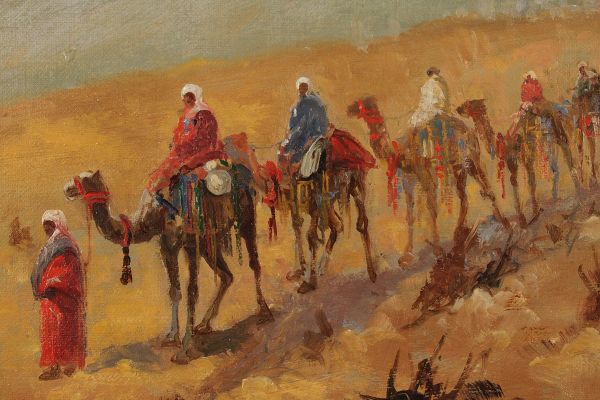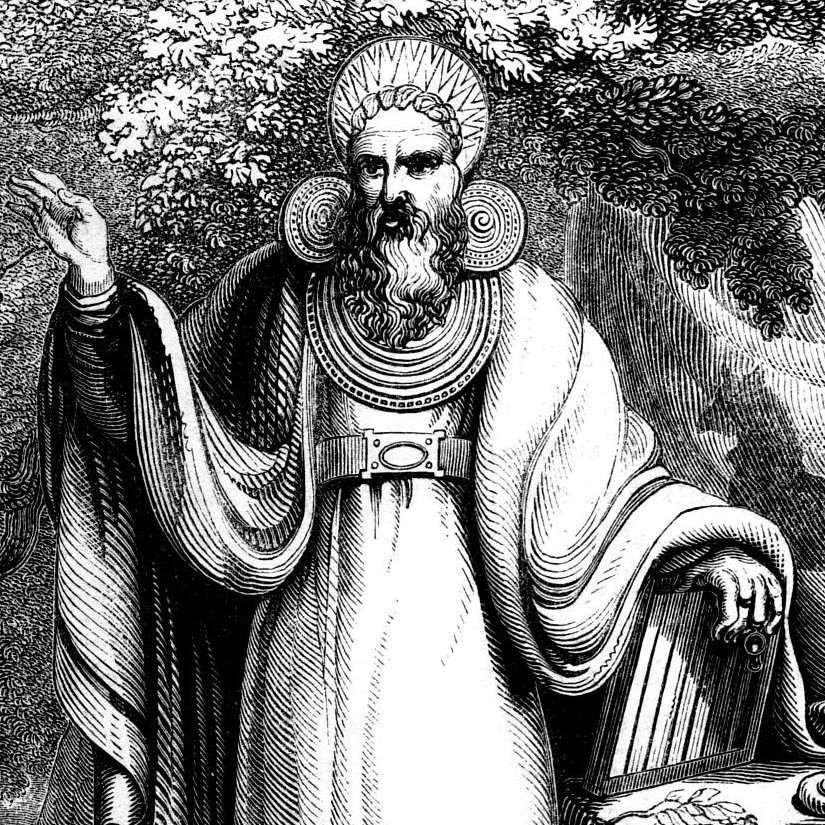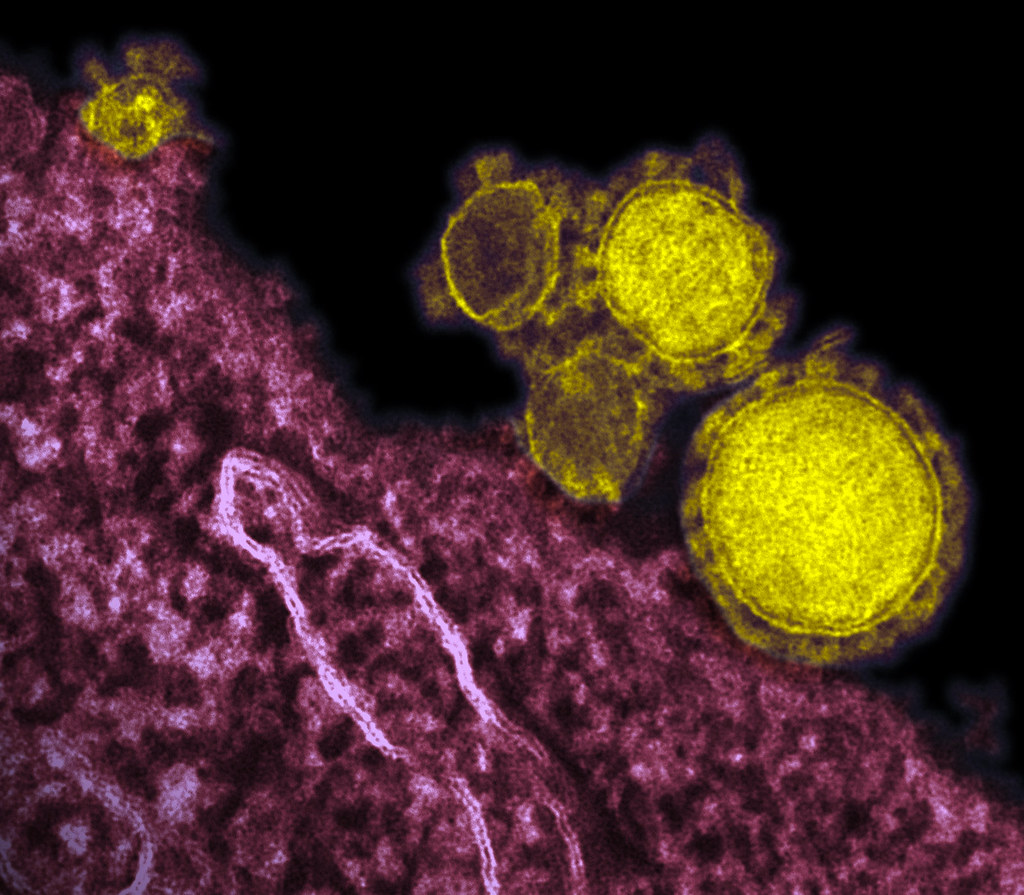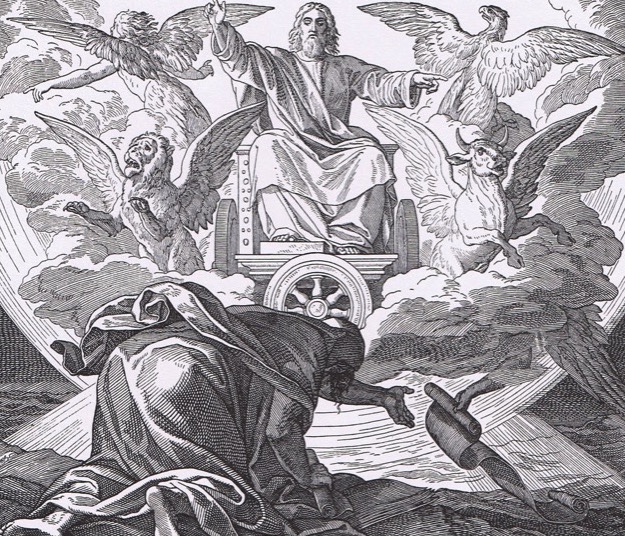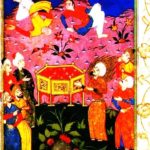All Islamic sources credit ‘Abd al-Muttalib ibn Hashim, Muhammad’s grandfather, with digging the well near the Kaaba in Mecca, called Zamzam. This makes sense: he was given the role of siqaya and rifada of Mecca, which meant that he was responsible for obtaining food and water for pilgrims during their trip to Mecca in the holy month of Ramadan, so it would have been natural for him to be concerned with wanting a more accessible water supply there.
This would have occurred between 530 and 545, if the general shape of the traditions concerning the event are accurate. Before this date, there was no source of water near the Kaaba, which in turn means that there was no permanent city of Mecca near the Kaaba.
This is a radical declaration, but it is the only possible one in light of the Islamic sources themselves.
The role of siqaya precludes an existing city of Mecca
The role of siqaya is that of water-bearer. It was the responsibility of the siqaya to bring enough water to satisfy the needs of the pilgrims who came to the Kaaba in the holy month.
If there was a city of Mecca (or Makkah, as the more accurate transliteration renders the name) surrounding the Kaaba, there would be little need for a siqaya. He would do nothing more than, at most, hire a couple of water-drawers to pull water from a well and dump it into a cistern where the camels could drink.
Without a nearby well, there could be no city. People simply could not and did not live more than a mile from a reliable source of water. I have run the calculations for Mecca’s annual rainfall, and a cistern that captured every millimeter the water from the roof and courtyard of a decent-sized family would be insufficient for providing even the basic drinking and cooking water of a family with no livestock.
Wells did exist in the region of Mecca before the digging of Zamzam, but these were located at the throat of a pass into the area of Mecca and other places that were similarly miles from the Kaaba–which is why the role of siqaya was necessary in the first place.
If there was a siqaya, there could be no town of Makkah.
Mecca was unknown to outsiders as a city before the AD 630s
Another strike against the myth of the “great city of Mecca” is that its existence entirely failed to attract the notice of any outside at any time before Muhammad’s campaigns. Yathrib (Medina) and Jeddah on the coast were well known to outsiders. So were many cities of ancient Yemen. But there is literally not a single clear note about the very existence of Mecca in any non-Islamic source until Muhammad began his campaigns against his neighbors.
Many Muslims attempt to make Diodorus’ account of the geography of Arabia (from the 1st century BC) to fit the Kaaba. South of the Bay of Aqaba, Diodorus says that there is a bay that runs inland about 90 kilometers, and that around it were a hunting people and that a “very sacred temple has been established there which is highly regarded by all the Arabs.” While both Muslims and Orientalists have attempted to make this fit the Kaaba, this is simply impossible, because Diodorus places the lands of the people of the Thamud southward of the temple down the coast. While the exact extent of the lands of the Thamud are unknown, they were certainly located to the north of Mecca. And this famous temple is north of the Thamud. Diodorus not only doesn’t know of Mecca, but he knows of a very different temple far away, probably in Midian.
The next attempt to identify Mecca in the ancient sources is via Ptolemy’s Guide to Geography (completed between AD 141 and 147). Ptolemy gives coordinates for a place called “Macoraba,” which is the only location that is between Yathib and Yemen that has a name that is at all close to Makkah, though it is to the southeast of Yathrib instead of the southwest. More problematic than the east-west error is that Jeddah (which is called Badeo after the name for the creek where the port sits, Ras Bad–Jeddah is a fairly recent name) is to the south of ‘Macroaba.”- Ptolemy’s sources were much better at determining longitude than latitude because of the technology of the era, and the location of Macroaba to the north of Jeddah is very unlikely to correspond to Makkah because of this error…even if Makkah was a name that was in use then, which is probably wasn’t.
There also seems to be no real etymological connection between Makkah and “Macroaba” (laying aside that this is probably the wrong name to be looking for altogether.) All attempts to equate the two have serious linguistic or chronological problems. The very best we can say is that there’s a word that’s sort of like “Makkah” that is applied to a place within 250 miles of where it should be in Ptolemy’s Geography. That’s not very convincing. The other attempts at identifying Makkah before Islam in other sources are even worse (see a nice series of scholarly articles here).
We also need to confront the fact are no inscriptions about Mecca or anything that can plausibly be the Kaaba from the Hejaz, Yemen, Ethiopia, Syria, or any Byzantine source before 630. No one–literally no one–in the historical sources talks about visiting Mecca, makes a graffito about the shrine at Mecca, or fights Mecca. There is also no archeological evidence of ancient Meccan habitation–what there was in the later Middle Ages is now pretty much entirely under the new masjid, and almost all of the modern city was build on raw land, with zero archeological remains found at most excavations.
Even the Islamic sources know “Makkah” isn’t the place’s ancient name
One of the striking things about looking at Makkah from the Islamic sources is the seeming discomfort with the very name. We are informed that the shrine was actually first called Bakkah in Ibn Ishaq, and it is referred to in that way in the Quran itself. In fact, the Quran only mentions the location “Makkah” once, speaking of the “valley of Makkah” when the followers of Muhammad were outside the city proper. (Makkah is not in a valley at all–or at least, the historic city was not. Instead, it’s in a large open area at the highest elevation in the mountains between Ta’if and Jeddah. I believe this line of the Quran has deceived centuries of Islamic scholars who lived very far away from Mecca into thinking that this was referencing the location of the city, but it was actually talking about the specific time when the followers of Muhammad had to leave the town proper and live in a valley outside of it.)
Some people assert that there is a consensus among Islamic scholars that the inner part of the city around the masjid of the Kaaba was called “Bakkah” and the outer part was called “Makkah,” but no such consensus actually exists. As many scholars assert that the name changed as claim that there was a distinction between the two.
In fact, we have even more names for the area from the six-volume work Akbar Makkah, which reports: “One of the residents of Makkah (…) gave me a book written by some of his forefathers. In it were stated the names of Makkah which the residents of Makkah claimed to be, i.e. Makkah, Bakkah, Barrah, Bassasah, Umm al-Qura, al-Haaram, al-Masjid al-Haaram, and al-Balad al-Amin. Some people say that ‘Saalahi’ is also among its names. Some of the Makkans claim that ‘Kutha’ is also one of its names.”
(Makkah and Bakkah have already been dealt with; Umm al-Qura means the “mother of cities”; al-Haaram is a nickname that means “the sacred”; al-Masjid al-Haaram means the “Sacred Mosque” and is now the name for the mosque around the Kaaba; and the other names are proper names that are not attributed to Makkah in other early Islamic sources.)
This is a very strange situation for what is supposed to be a “great trade city,” according to Islamic folklore dating from the late Middle Ages. Sana’a has no uncertainty in its name. Neither does Saba or even the far less important city of Yathrib/Medina. Great cities have names that are fixed or, if changed, are changed in a fell swoop, and no confusion about them exists. But uncertainty swirls around the name of Makkah.
I can, however, actually solve this. Based on its usage in the Sunnah, Makkah was used in the Islamic sources to refer a district, which consisted of the entire semi-open area where the Kaaba was located. This name was then narrowly applied (along with other names) to the town that grew up there. This also explains the “error” of the “valley of Makkah”–this was a valley of the Makkah district, near the town that was itself not in a valley at all.
Medina was renamed for a reason
Medina is the name that Muhammad would give Yathrib when he took it over. It essentially means a state or a sovereign land–in the context of Yathrib, it meant a self-ruling city-state.
The reason that Medina was given this title rather than Mecca is simple. Medina was the “big city” to the Arabs of the Hejaz. Compared to it, Mecca was simply a backward little village. Muhammad saw himself as trading up not only in respect but in his geographical position, and his renaming of the city was a brag about its preeminence among other towns in the Hejaz. Yathrib was a proper medinah. Makkah was not.
As we would expect, other countries know about Yathrib long before Muhammad, from the Greeks to the Byzantines to the Yemenite kingdoms. This stands in stark contrast to Mecca, which was nothing more than the site of a locally important shrine.
There is no mention of the spice trade in early Islamic sources
A related point is the myth that Mecca was a great city on the spice road. By the time of Muhammad, the ancient international spice trade had moved from land-based caravans to strictly sea transport a solid two centuries before. Aden was a major port for the export of Yemenite goods and also the import of goods for regional use, but the caravans that left Yemen all had a terminus in the cities of Arabia–that is, there was no caravan trade linking Yemen with Syria. Sea trade was cheaper, faster, and safer. Goods traded overland could never have competed with the sea routes.
The caravan patterns of Mecca make this abundantly clear. In the winter, caravans went from Mecca to Sana’a in Yemen and back to Mecca. In the summer, they went north, toward Syria, and then back to Mecca. The goods from Sana’a were not traded in Syria. Instead, the goods from Mecca and the surrounding towns were traded in both places for salt and wheat and for luxuries like slaves, spices, perfumes, and silk that were consumed locally in the Hejaz. Because many Arabs did come to Mecca during the sacred months, Mecca was a convenient local trading hub. Merchants of the Quraysh could purchase leather, wool, and the dates grown in nearby oases, stocking up their caravans for the trip that immediately followed the time of the pilgrimage, and they could trade goods that they’d acquired from their previous trip.
The only industry assigned to Mecca by the early Islamic sources is the tanning of leather, something that many of the women did there. Tanned leather was used for making Bedouin tents and was also a major trade item.
There are zero references to spice merchants in the early Islamic sources. All the stories of great wealth come from much later times. The idea that Mecca was a great spice city in pre-Islamic times is nothing more than late Medieval folklore, colored by ego and the memories of Petra and Damascus, since it hardly seemed fitting the Prophet came from a backwater little town. There is no basis for believing this in any of the early Islamic sources.
Zamzam allowed a town to grow around the Kaaba for the first time
Once the Zamzam well was dug, the area around the Kaaba was suitable for year-round habitation, instead of being a seasonal pilgrimage and bazaar used only when water was being hauled from afar.
This gave the Quraysh their own town for the first time, and it propelled ‘Abd al-Muttalib into a position of great importance. The town was still small about a hundred years later, when it was conquered by Muhammad, containing no more than 500 people, at the most. But the new town, however small, was very important to the Quraysh. Instead of being scattered around the region, the Quraysh were able to make their hold over the Kaaba stronger than ever and to establish a more secure place to live, as well as becoming a regular stop for any local caravans headed over the mountains toward Syria. The Quraysh had already demanded a toll for those who went through the mountain passes, but this gave them a more fixed location from which to levy it.
The Quraysh so were terrified during the Expedition of the Elephant because their town was only a couple of decades old at that point and highly vulnerable. But, of course, Abraha didn’t even know that their town existed…because, again, it was so new and so small, and he wasn’t actually interested in desecrating pagan shrines, as the Quraysh probably imagined.
